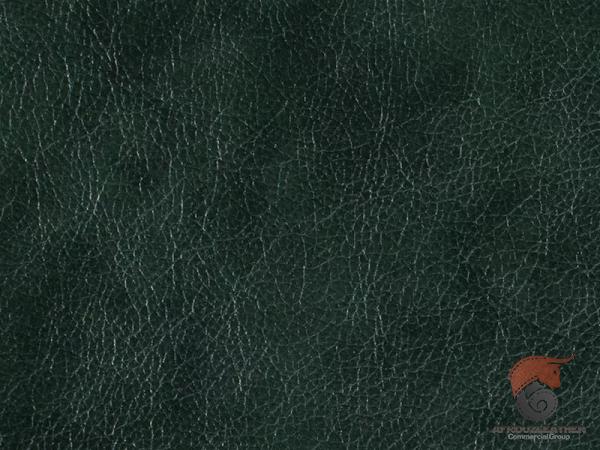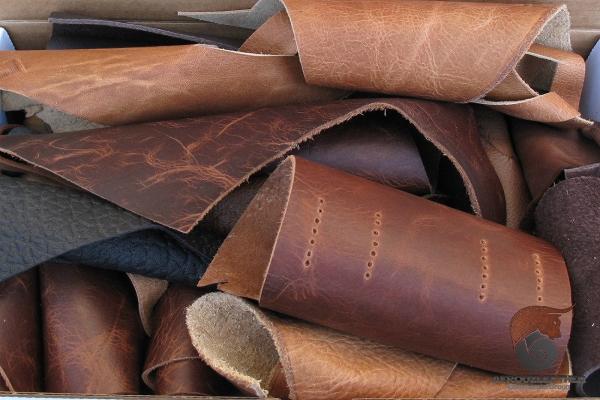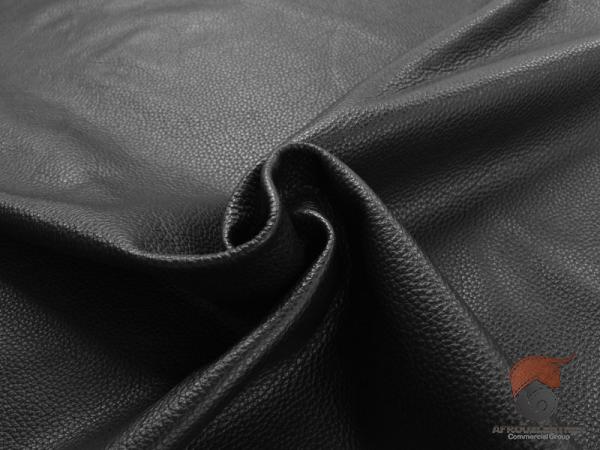Synthetic leather and PU leather are two popular alternatives to genuine leather in the fashion and upholstery industries. They are designed to mimic the look and feel of real leather while offering distinct advantages such as lower cost, durability, and ease of maintenance. In this article, we will compare and contrast synthetic leather and PU leather to help you understand the key differences between the two. Synthetic leather, also known as faux leather or artificial leather, is a man-made material created to imitate the properties of real leather. It is typically composed of a fabric base, such as polyester or rayon, which is coated with various layers of polyurethane (PU), PVC, or other synthetic materials. Synthetic leather can be found in a wide range of products, including clothing, shoes, handbags, furniture upholstery, and automotive interiors. PU leather, on the other hand, is a specific type of synthetic leather that is made from a split leather backing bonded with a polyurethane (PU) layer.
leather
 This manufacturing process gives PU leather a more natural appearance and texture compared to other synthetic leather varieties. PU leather is widely used in the fashion industry for items such as jackets, bags, and shoes, as well as in the furniture industry for upholstery purposes. One of the primary advantages of both synthetic leather and PU leather is their cost-effective nature. Compared to genuine leather, which can be expensive due to the cost of raw materials and the labor-intensive tanning process, synthetic leather and PU leather can be produced at a fraction of the cost. This makes them more affordable options for consumers who desire the look and feel of leather without breaking the bank. Durability is another significant advantage of synthetic leather and PU leather. Compared to genuine leather, which can be prone to wear and tear over time, the synthetic materials used in these alternatives are typically more resistant to scratches, stains, and fading. Synthetic leather and PU leather also tend to be more water-resistant, making them suitable for use in various environments, including high-moisture areas. In terms of maintenance, synthetic leather and PU leather are generally easier to care for than genuine leather.
This manufacturing process gives PU leather a more natural appearance and texture compared to other synthetic leather varieties. PU leather is widely used in the fashion industry for items such as jackets, bags, and shoes, as well as in the furniture industry for upholstery purposes. One of the primary advantages of both synthetic leather and PU leather is their cost-effective nature. Compared to genuine leather, which can be expensive due to the cost of raw materials and the labor-intensive tanning process, synthetic leather and PU leather can be produced at a fraction of the cost. This makes them more affordable options for consumers who desire the look and feel of leather without breaking the bank. Durability is another significant advantage of synthetic leather and PU leather. Compared to genuine leather, which can be prone to wear and tear over time, the synthetic materials used in these alternatives are typically more resistant to scratches, stains, and fading. Synthetic leather and PU leather also tend to be more water-resistant, making them suitable for use in various environments, including high-moisture areas. In terms of maintenance, synthetic leather and PU leather are generally easier to care for than genuine leather.
Specifications of leather
 They require minimal maintenance and can be easily wiped clean with a damp cloth. Unlike genuine leather, they do not require regular conditioning or specialized leather care products. This makes synthetic leather and PU leather more convenient choices for individuals with busy lifestyles or those who prefer low-maintenance materials. When it comes to the aesthetic appeal, synthetic leather and PU leather aim to replicate the look and feel of genuine leather. However, the quality can vary significantly depending on the manufacturing process and the materials used. Higher quality synthetic leather and PU leather can rival the appearance of genuine leather, with realistic textures and patterns. On the other hand, lower quality varieties can appear plastic-like or feel artificial to the touch. It is important to note that while synthetic leather and PU leather strive to mimic the look of genuine leather, they may not have the same depth and richness of natural variations and aging that occur in authentic leather. In terms of sustainability, synthetic leather and PU leather offer some environmental benefits compared to genuine leather. The production of genuine leather involves the use of animal hides, which raises ethical concerns regarding animal cruelty and the impact on the environment. In contrast, synthetic leather and PU leather are manufactured from synthetic materials, reducing the reliance on animal-based resources. However, it is crucial to consider the environmental impact of the manufacturing processes involved in producing synthetic leather, as the use of petroleum-based products and toxic chemicals may contribute to pollution and waste. While synthetic leather and PU leather have several advantages, they are not without their limitations. One of the main drawbacks is their breathability.
They require minimal maintenance and can be easily wiped clean with a damp cloth. Unlike genuine leather, they do not require regular conditioning or specialized leather care products. This makes synthetic leather and PU leather more convenient choices for individuals with busy lifestyles or those who prefer low-maintenance materials. When it comes to the aesthetic appeal, synthetic leather and PU leather aim to replicate the look and feel of genuine leather. However, the quality can vary significantly depending on the manufacturing process and the materials used. Higher quality synthetic leather and PU leather can rival the appearance of genuine leather, with realistic textures and patterns. On the other hand, lower quality varieties can appear plastic-like or feel artificial to the touch. It is important to note that while synthetic leather and PU leather strive to mimic the look of genuine leather, they may not have the same depth and richness of natural variations and aging that occur in authentic leather. In terms of sustainability, synthetic leather and PU leather offer some environmental benefits compared to genuine leather. The production of genuine leather involves the use of animal hides, which raises ethical concerns regarding animal cruelty and the impact on the environment. In contrast, synthetic leather and PU leather are manufactured from synthetic materials, reducing the reliance on animal-based resources. However, it is crucial to consider the environmental impact of the manufacturing processes involved in producing synthetic leather, as the use of petroleum-based products and toxic chemicals may contribute to pollution and waste. While synthetic leather and PU leather have several advantages, they are not without their limitations. One of the main drawbacks is their breathability.
buy leather
 Genuine leather has natural pores that allow air circulation, making it more comfortable to wear, especially in hot weather. Synthetic leather and PU leather, on the other hand, lack these pores and can be less breathable, leading to moisture buildup and discomfort. This can be addressed to some extent by incorporating ventilation features in the design, but it remains a factor to consider when choosing between genuine leather and its alternatives. Another limitation is the potential for peeling or cracking over time. Synthetic leather and PU leather may not have the same longevity as genuine leather and can deteriorate with prolonged use. Factors such as exposure to harsh weather conditions, excessive heat, or regular wear and tear can accelerate the wear and tear of these materials. However, with proper care and maintenance, synthetic leather and PU leather can last for a considerable period and provide satisfactory performance. In conclusion, synthetic leather and PU leather serve as cost-effective alternatives to genuine leather, offering durability, easy maintenance, and a range of aesthetic options. While they may lack some of the natural qualities of genuine leather, such as breathability and aging variations, they are suitable for a wide range of applications, including fashion and upholstery. The choice between synthetic leather and PU leather ultimately depends on personal preferences, budget considerations, and the specific requirements of each use case.
Genuine leather has natural pores that allow air circulation, making it more comfortable to wear, especially in hot weather. Synthetic leather and PU leather, on the other hand, lack these pores and can be less breathable, leading to moisture buildup and discomfort. This can be addressed to some extent by incorporating ventilation features in the design, but it remains a factor to consider when choosing between genuine leather and its alternatives. Another limitation is the potential for peeling or cracking over time. Synthetic leather and PU leather may not have the same longevity as genuine leather and can deteriorate with prolonged use. Factors such as exposure to harsh weather conditions, excessive heat, or regular wear and tear can accelerate the wear and tear of these materials. However, with proper care and maintenance, synthetic leather and PU leather can last for a considerable period and provide satisfactory performance. In conclusion, synthetic leather and PU leather serve as cost-effective alternatives to genuine leather, offering durability, easy maintenance, and a range of aesthetic options. While they may lack some of the natural qualities of genuine leather, such as breathability and aging variations, they are suitable for a wide range of applications, including fashion and upholstery. The choice between synthetic leather and PU leather ultimately depends on personal preferences, budget considerations, and the specific requirements of each use case.

Your comment submitted.